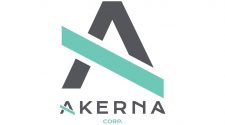As regular readers of my column know, my two favorite sector investments are technology and health care. They are easily the best sector performers for the past decade. Compared to the S&P 500’s 10-year average gain of 14% through June 30, tech stocks have returned 17% and health-care stocks 16%.
Earlier this month, Fidelity held an investment-advisor conference by phone devoted to technology and health care that I listened to. The Fidelity analyst argued that the best subsector for tech is semiconductors and the top choice for health care is biotechnology.
Therefore, I am recommending below two investment possibilities for semiconductors and three for biotech, a total of three stocks and two mutual funds. Through June 30, semiconductors have returned a 19% average for the last decade, outperforming the 10-year all-technology stock average by 2% annually.
In my column here last January, I recommended chip-maker Nvidia (NVDA) as one of my picks for 2020 even after its stunning 76% jump last year. Incredibly, it has surged another 62% this year through June 30. Now valued at $250 billion, Nvidia has posted an almost unbelievable 44% average for 10 years!
It is a leading chip-maker for self-driving vehicles. Last month Nvidia announced a partnership with Mercedes-Benz to “redesign its entire fleet around a software designed computer network.” (See “How Nvidia Went from Gaming to AI to Riding with Mercedes,” Barron’s, June 28, 2020, p. 8.)
Typically, Nvidia’s graphic processing units (GPUs) rate the “best-in-breed” for video games, casino machines, cloud gaming and virtual reality. Tech giants Alphabet (Google), Amazon and Microsoft all use Nvidia’s GPUs for their cloud infrastructure businesses.
Certainly Nvidia is expensive, currently selling at a high 72x earnings, nearly triple the current market’s 25x average. (My favorite stock, Amazon, is twice as high, at 152x earnings.) Despite its run-up and high p/e, Nvidia gets top buy ratings from MarkerEdge, TheStreet and Credit Suisse.
One prominent Wall-Street analyst, Ed Yardeni, suggested this month that Nvidia should be added as the seventh stock to the great group of six that are the key contributors to our recent market rally: Apple, Microsoft, Amazon, Alphabet, Facebook and Netflix. (I own all of them except Alphabet and Facebook.)
An added bonus for investing in Nvidia is that it was rated as the third best company from Barron’s June 29 rankings of 100 best sustainable companies. It was honored for its customer loyalty, employee retention and commitment to social issues.
For mutual fund investors, I’m picking the tax-efficient ETF, Van Eck Semiconductors (SMH). It was up 31% last quarter and is in the top 6% of all tech funds for five years. Its 25% five-year average has trounced tech’s comparable 18% return. Since it began in 2011, SMH has posted a solid 23% annual average.
Taiwan Semiconductor, the world’s largest chipmaker, is 12% of SMH’s portfolio with Intel and Nvidia at about 9% each. Together, they make up 30% of its 25 stock positions. Obviously, buying SMH is much lower risk than purchasing only one stock.
To invest in biotech, I’m recommending two stocks. Regeneron Pharmaceuticals (REGN) is very high risk, and the safer play — Abbvie (ABBV) — is much lower risk and a great choice for income investors given its nearly 5% annual payout. It is my top-rated high-paying dividend stock!
(Wall Street firm Zack’s picked ABBV as one of its five best dividend stocks July 13.)
Now valued at $173 billion, ABBV has tripled its dividend from 40 cents a share in 2013 when it was spun off from Abbott Laboratories to $1.18 now. It is an inexpensive stock, selling at only 17x earnings.
Abbvie has risen 12% so far this year and has averaged 11% for five years, double the drug manufacturers’ average return. Its most famous drug, with sales of $20 billion annually, is Humira that treats rheumatoid arthritis and Crohn’s disease.
Earlier this month, Allergen, an Abbvie company, had its popular Botox drug approved “for the treatment of spasticity in pediatric patients two years of age and older.” Rating firms MarketEdge, New Constructs and TheStreet all give ABBV their highest rankings.
My other biotech stock pick, Regeneron, was featured July 13 in Barron’s Up & Down Wall Street column where the author noted that Uncle Sam funded REGN with “$450 million to supply its antiviral treatment (for Covid-19) to the government.”
The columnist claimed REGN didn’t really need all that cash given its successful money-making drugs Eylea for eye-treatment and its eczema drug Dupixent. Plus, he argued, it is developing “a potential blockbuster drug” to treat cancer and has more than 100 other drugs in its pipeline. A SunTrust analyst, Robyn Karnauskas, is so impressed that she has raised her price target this month for REGN to $750 from her way-too-low $400 a share.
REGN, a large biotech company valued at $65 billion, is certainly the most volatile stock I’ve ever recommended. It has gained 66% this year through June 30 but its five-year average is a mediocre 4%. However, its 10-year number is an amazing 40% average! Currently, REGN sells at 32x earnings and gets top recommendations from MarketEdge, TheStreet and Credit Suisse.
My last pick is Fidelity Select Biotechnology (FBIOX), a mutual fund ably managed by Rajiv Kaul for 15 years. His fund ranks in the top 3% of all health funds for 10 years, averaging 21% a year. Despite returning 14% this year, FBIOX’s five-year average through June 30 is the same disappointing 4% as Regeneron’s
Can you imagine my excitement when I discovered that, at 9% of his portfolio, ABBV is Kaul’s biggest position and at 6% REGN is his second largest holding? Altogether, he owns an incredible 249 stocks in his $7.7 billion biotech fund.
Of course, I own all five of my recommendations above. Abbvie is my number one pick for most readers given that: (1) it is Kaul’s largest holding in FBIOX, (2) it pays almost a 5% dividend and (3) it is much lower risk than the other picks above. However, my number one choice for investors willing to accept much higher risk is certainly Nvidia. (I bought additional shares of both ABBV and NVDA July 16.)
Note: Maybe my pessimism about a market I think is now overvalued is dead wrong. Our terrific 20% gain last quarter was the fourth best since 1950. There has never been a negative quarter following one of the 10 best and the average gain for the 10 subsequent quarters is a solid 8%.
















